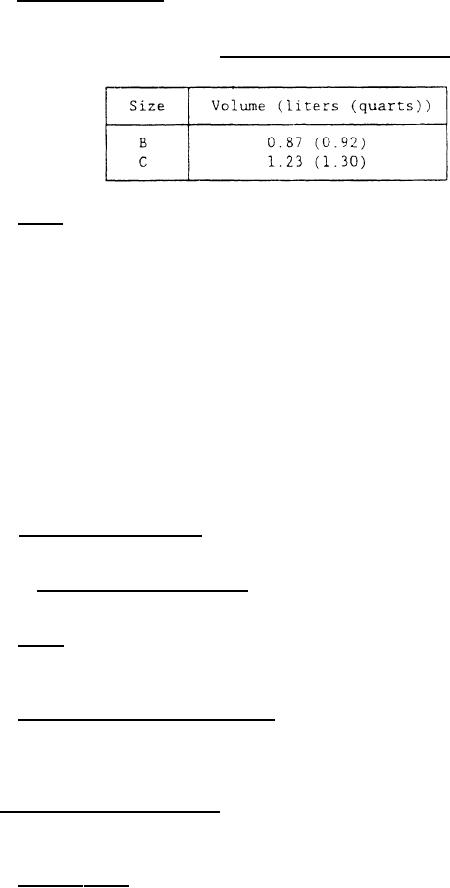 |
|||
|
Page Title:
Table III. Solids retention capacity. |
|
||
| ||||||||||
|
|  MI L- P-20632 B(SH)
The solids retention volume of the purifier shall
3 4.3 Solids retention.
be not less than stated in table III.
Solids retention capacity.
TABLE III.
3.4.4 Shock. The purifier shall meet the requirements for grade A, type A,
class I or II (see 6.2) high impact shock in accordance with MIL-S-901. The
purifier shall restart and resume normal operation if it shuts down when subjected
to the test requirements of MIL-S-901.
Equipment shall be hard-mounted to a suit-
able base plate for test purposes.
The determination of stresses resulting from
the shock test shall be accomplished by the application of analytical mechanics.
The allowable stress in components due to shock shall be the yield strength (O 2
Normal stresses in parts, such as the tensile
percent offset of the material)
stress in a bolt due to initial pull-up, shall not be added to the shock stresses
The maximum accelerations possible under the shock tests shall be withstood by
hold-down bolts, supporting feet or lugs, and main structural member of the
equipment. No failure or permanent deformation may occur as a result of shock.
Components of an assembly mounted on a common rigid base need not be designed for
accelerations than the values for which the whole assembly is designed
higher
unless there is reason to believe that higher accelerations will be experienced by
the components.
The equipment shall conform to the requirements
3 4,5 Mechanical vibration.
of MIL-STD-167-1, type II.
3.4.5.1 Environmental vibration
The equipment shall withstand the environ-
mental vibration requirements of MIL-STD-167-1, type I
3.4.6 Noise. The equipment shall be in accordance with the acceptance
criteria specified in MIL-STD-740-1 (airborne) and MIL-STD-740-2 (structureborne),
when tested (see 4 6.12)
The equipment shall be in accordance
3.4.7 Electromagnetic Interference.
with electromagnetic emission suppression requirements of MIL-STD-461, parts 1 and
Acceptance testing shall be in accordance with
5, class A4, for surface ships
MIL-STD-462
3 5 Environmental conditions. Equipment shall operate continuously at
rated capacity under any combination of the range of environmental conditions
specified herein
Table IV establishes the applicable temperature ranges.
3.5.1 Temperatures.
11
|
|
Privacy Statement - Press Release - Copyright Information. - Contact Us |